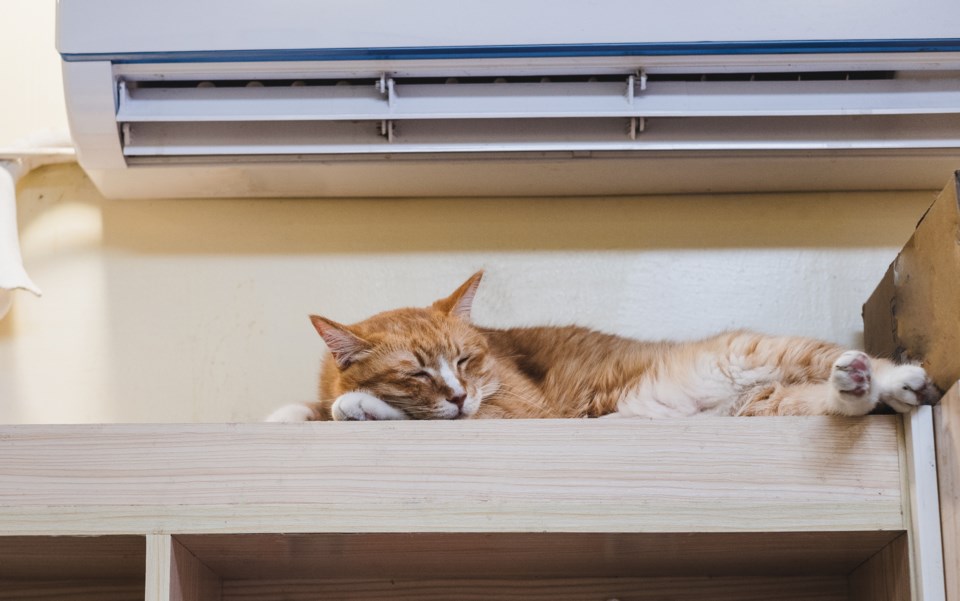Weatherhood is a series of stories produced in collaboration with ChatGPT.
As climate change continues to disrupt weather patterns globally, the issue of keeping homes cool during increasingly hot summers is a concern for many.
Heat stroke is a serious condition that can occur when the body overheats, typically as a result of prolonged exposure to high temperatures. It can cause symptoms such as high body temperature, altered mental state, rapid breathing, and racing heart rate. In severe cases, heat stroke can lead to seizures and cardiac arrest.
According to Joanna Eyquem, managing director of climate-resilient infrastructure at the Intact Centre on Climate Adaptation, heat stroke is a "silent killer."
She states, "The impacts of heat are death."
Who is most at risk?
The most vulnerable demographic during extreme heat in British Columbia are those living in older, low-rise buildings that were built decades ago without a warming world in mind.
Betsy Agar, director of the buildings program at the climate think tank the Pembina Institute, says, "We think there's a priority of really preserving that kind of building. They're actually often most affordable, but they also are the ones that kind of need the most work.”
For British Columbians living in apartments, this issue is particularly challenging.
However, there are sustainable and eco-friendly strategies to maintain comfortable indoor temperatures without the energy consumption of air conditioning.
Practical solutions for keeping homes cool
There are several practical solutions that British Columbians can implement to keep their homes cool during heat waves.
These include making a plan to check on vulnerable people during a heat wave, finding ways to shade homes with plants and trees, or blocking sun directly by installing blinds, heat-resistant curtains, or window films.
However, these solutions need to be adapted to the local community. For example, planting a tree next to a home might be beneficial in Metro Vancouver, but it could be a dangerous proposition in a fire-prone town in B.C.’s Okanagan Valley.
One of the most effective natural solutions lies in the clever use of ventilation.
During the cooler evening and night hours, residents can open windows and doors to invite in the breeze. This cools the apartment's interior and provides much-needed ventilation. As the day begins to heat up, shutting the windows and drawing the blinds helps keep the indoor air cool for as long as possible.
The importance of window coverings in this process cannot be overstated. Light-coloured blinds, shades, or curtains can block out the heat of the sun and reduce indoor temperatures significantly. This is especially important for windows facing east or west, which receive the most sunlight.
While the natural airflow is a powerful tool for cooling, fans can enhance its effects. By circulating the air within an apartment, fans can create a wind-chill effect, making the space feel cooler. A popular trick is to create a DIY air conditioner by placing a bowl of ice in front of a fan. The air blown across the melting ice is cooled and adds a refreshing, cooling mist to your living space.
Another key to keeping apartments cool lies in minimizing internal sources of heat. Appliances, particularly larger ones like ovens and dryers, can significantly increase indoor temperatures. By using these appliances sparingly, and only during the cooler parts of the day, residents can avoid the additional heat they generate.
Lighting can also contribute to a warmer apartment. Traditional incandescent bulbs emit heat, so switching to cooler, energy-efficient LED lighting can make a difference in how hot a room feels.
Staying cool in a warming world
The impact of personal habits shouldn't be ignored.
Staying hydrated and wearing lightweight, breathable clothing can help individuals keep their body temperature down, making the heat more bearable.
For those with a green thumb, filling your apartment with indoor plants can help to reduce indoor temperatures. Plants like snake plants, spider plants, and aloe vera not only cool their surroundings but also improve air quality.
Finally, when air conditioning becomes a necessity, it is crucial to make the process as efficient as possible. Energy-efficient models, coupled with responsible use, can ensure that you stay cool without significantly contributing to global warming.
With files from Stefan Labbé



